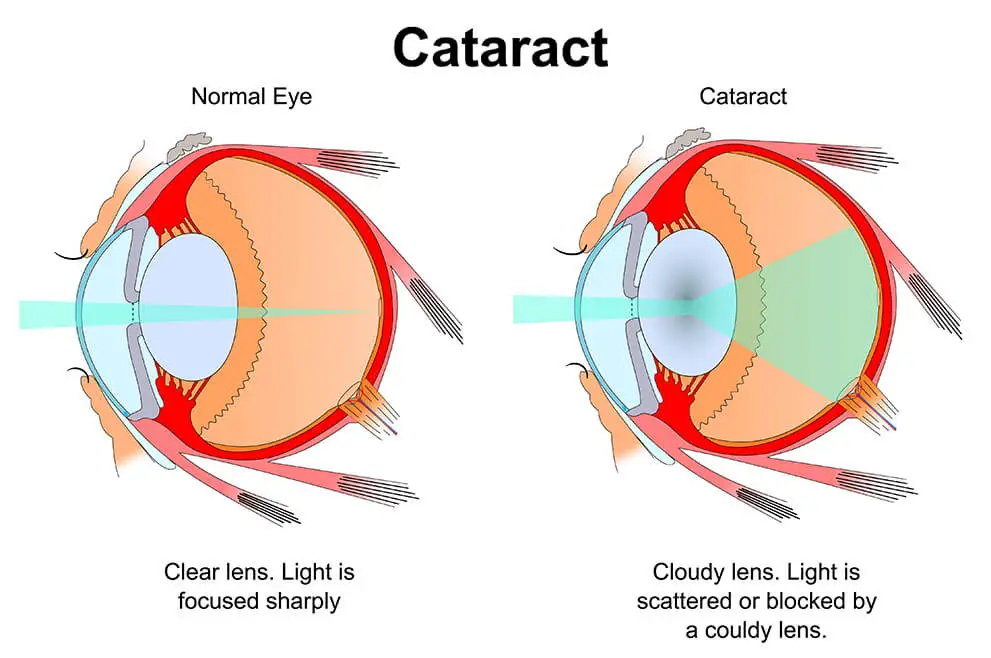
Cataract is one of the leading causes of vision loss in the world, especially in older adults. It is a condition in which the natural lens of the eye becomes cloudy, leading to blurred vision and eventual loss of vision if left untreated. Cataracts can develop in one or both eyes and can occur at any age, although it is most common in people over the age of 60.
Causes of Cataract
The most common cause of cataract is age. As we age, the proteins in the lens of our eye can break down and clump together, causing the lens to become cloudy.
Other factors that can contribute to the development of cataracts include:
- Genetics: A family history of cataracts can increase the risk of developing the condition.
- Diabetes: People with diabetes are at a higher risk of developing cataracts due to high blood sugar levels.
- UV radiation: Exposure to ultraviolet radiation from the sun can damage the lens and increase the risk of cataracts.
- Smoking & Drinking: Smoking cigarettes and drinking excessive alcohol can increase the risk of cataracts.
- Trauma: Trauma to the eye can cause cataracts to develop.
Symptoms of Cataract
Cataracts usually develop slowly over time, and many people may not even realize they have the condition until it begins to affect their vision. Some of the most common symptoms of cataracts include:
- Blurred vision: Vision may be blurry, and objects may appear hazy or less vibrant.
- Sensitivity to light: People with cataracts may be more sensitive to light and experience glare or halos around lights.
- Difficulty seeing at night: Cataracts reduce contrast sensitivity, making it difficult to see in low-light conditions, such as at night.
- Double vision: Cataracts can cause double vision in one eye.
- Changes in color vision: Colors may appear faded or yellow.
- Need for frequent changes in eyeglass prescriptions: As the cataract grows, the prescription for eyeglasses may need to be changed more frequently.
Prevention of Cataract
While there is no sure-shot way to prevent cataracts from developing, there are some steps that can be taken to reduce the risk of the condition. To begin with, it’s important to protect the eyes from UV radiation by wearing sunglasses that block out UV radiation. If you’re diabetic, focus on maintaining healthy blood sugar levels. Eating a healthy diet, which is rich in antioxidants, can also help in preventing or delaying cataract. Quitting smoking and reducing your alcohol intake will also be helpful in cataract prevention. Lastly, make sure that you get a regular eye exam, especially if there is a family history of cataracts or other eye conditions.
Treatment for Cataract
If cataract begins to interfere with daily activities, surgery may be recommended. During cataract surgery, the cloudy lens is removed and replaced with an artificial lens. The procedure is usually performed on an outpatient basis and is considered very safe and effective.
If you are experiencing any symptoms of cataracts, it is important to seek medical attention promptly to prevent further vision loss. By taking steps to reduce risk factors and getting regular eye exams, it may be possible to prevent or delay the onset of cataract.
